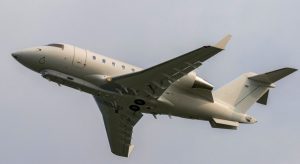The Army has awarded a pair of deals to L3Harris [LHX] and Raytheon Applied Signal Technology
[RTX] totaling to $18 million to continue work developing Multi-Domain Sensing System (MDSS) prototypes for the service’s High Accuracy Detection and Exploitation System (HADES) intelligence-gathering aircraft program.
Phase 2 of the MDSS program will run for 24 months and have both firms advancing their designs and building prototypes “to increase performance/sensitivity at higher altitude, range, and speed to meet specifications, exploit near-peer threats, and integrate into an open system architecture,” according to the Army.

“The sensors resulting from the MDSS Sensor Evaluation Program will first be used on the MDSS HADES. The MDSS HADES will be globally deployable and provide a multi-faceted sensing capability at higher altitudes and longer ranges, and with longer endurance than is currently available from the Army’s enduring fleet,” Dennis Teefy, the Army’s project director for sensors-aerial intelligence, said in a statement last week. “The goal is to provide deep-sensing intelligence collection of indicators and warnings, electronic order of battle, and patterns of life for target development. This will allow standoff operations to detect, locate, identify, and track critical targets for the ground commander.”
The Army last June announced it selected L3Harris and Raytheon for the first phase of the MDSS prototype program, awarding $4.7 million to the two firms to demonstrate their sensor offerings (Defense Daily, June 14 2021).
For Phase 3 of MDSS, the Army said it will select up to two vendors to integrate their prototype MDSS sensors onto the HADES aircraft for a series of flight tests over a 12-month period.
The overall value of the OTA awards for the three-phased MDSS prototype effort is to total about $49 million, according to the Army.
The Army began its search for the future HADES platform in 2020, detailing its interest in a “business jet-class” aircraft capable of reaching 41,000 feet and leveraging data collected from the Airborne Reconnaissance and Electronic Warfare System (ARES) and Airborne Reconnaissance and Target Exploitation Multi-Mission System (ARTEMIS) programs to refine its requirements.
“The Army is pursuing HADES to address the demands of future Multi-Domain Operations against peer- and near-peer adversaries,” Teefy has said previously. “The goal is to provide deep-sensing intelligence collection of indicators and warnings, electronic order of battle, and patterns of life for target development. This will allow stand-off operations to detect, locate, identify, and track critical targets for the ground commander.”